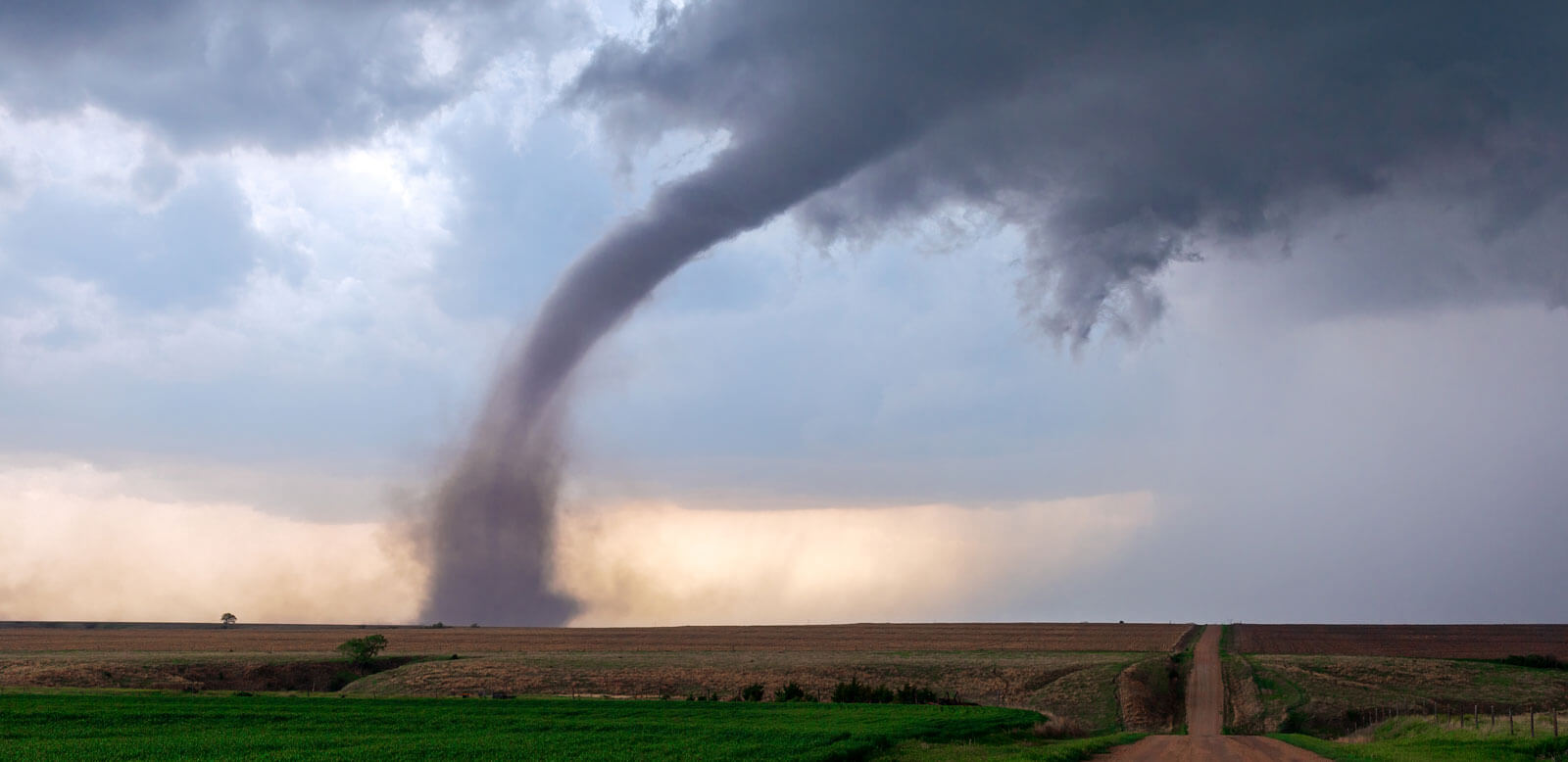
Does homeowners insurance cover tornado damage?
Yes, and nine other common tornado and insurance questions answered
December 20, 2022 — Disaster insights | Homeowner insights
Tornadoes can arise suddenly and cause significant destruction. Over the last three years, more than 1,300 tornadoes have occurred each year in the United States, according to the National Oceanic and Atmospheric Administration (NOAA).1 Like a hurricane, tornado damage is classified as wind damage and typically provided for under that coverage on a standard homeowners insurance policy. Unlike hurricanes, there is less time to prepare for a tornado and they occur more frequently.
Securing your property with insurance and understanding the steps necessary to prepare will provide the peace of mind you need for the unpredictability of tornadoes.
The United States has more tornadoes than any other country, with over 1,000 reported annually since the early 1990s.2 Tornadoes are most common in the central plains — east of the Rocky Mountains and west of the Appalachian Mountains — but they have occurred in every state in the U.S.3
Tornadoes can occur anytime the conditions are right for thunderstorms. When warm, humid air rises and cool air falls inside thunderclouds, bringing rain (and sometimes hail), it can cause the air to twist and whirl, resulting in a tornado.
Tornadoes are troublesome to prepare for because they are difficult to predict. Currently, meteorologists cannot calculate the path of the storm, only the potential for a tornado to occur. Long before tornado season is underway is when you should be thinking about preparing. The Centers for Disease Control and Prevention has a list of ways to get ready. In addition to being prepared for an emergency, monitoring the weather conditions and knowing where to take shelter in the event of a tornado, you’ll want to confirm your homeowners insurance coverages and protections.
Wind or hail damage caused by tornadoes is covered under standard homeowners insurance policies. However, in some storm-prone areas, policies may exclude wind coverage, and insurance companies may require windstorm coverage for tornadoes and hurricanes. If this is the case, you’ll want to consider a separate windstorm policy to ensure your home is protected against any damages.
If you live in an area where tornado warnings are common, like Texas, you will likely need additional coverage to ensure your property is protected. State legislation does not require specific coverages, and tornado insurance is not a separate category. Instead, tornadoes are classified as windstorms and provided for under a separate windstorm policy that would also cover hurricanes. Talking with your insurance specialist will help determine what coverages you have and if additional coverages are necessary to restore your home in the event of tornado damage.
Yes, a tornado is considered wind damage and covered under a standard homeowners insurance policy in most areas. In storm-prone places like “tornado alley,” a separate windstorm policy may be necessary to ensure that you have the proper coverage to restore your home and property after a tornado.
If you experience tornado damage to your home or property, your priority is your safety and the safety of those around you. Once it is safe, you’ll need to contact your insurance provider to file a claim. Documenting the storm with pictures of the tornado damage is one of the first steps you’ll take as you navigate the claims process.
Coverage for structural damage to your home resulting from a tornado, like broken windows or roof damage from flying debris, typically falls under dwelling coverage or Coverage A. If you live in an area where you’re required to have a separate windstorm policy, a tornado is a covered peril. If your standard policy excludes tornado damage, you’ll need a windstorm policy to be sure your loss can be restored in the event of a tornado, so understand your specific policy coverages.
Further coverage may be available to help you restore your home after a tornado. When personal belongings are damaged, Coverage C can help replace these items after a tornado. Some policies also have a loss of use coverage or Coverage D. If you’re required to relocate after a storm because your home is uninhabitable, Coverage D can help with these expenses. Understanding your policy and general policy coverages before you need to file a claim can be very helpful.
Filing a tornado claim is the same as filing a claim for other perils like fire, theft, hail and hurricanes. Reaching out to your insurance company is the first step. Understanding what you’ll need to file a claim can help you confidently move through the process. If you have questions at any point during the claim process, your insurance representative is your best resource.
Tornadoes can be unexpected and cause significant damage. Knowing you have the right insurance coverage to restore your home after a storm is something you can do long before tornado season starts. With the necessary coverages in place, you can keep your focus on making sure your family is secure and out of harm’s way.
- https://www.spc.noaa.gov/climo/online/monthly/newm.html#2011
- https://www.britannica.com/story/why-does-the-united-states-have-more-tornadoes-than-any-other-country
- https://www.nssl.noaa.gov/education/svrwx101/tornadoes/faq/
